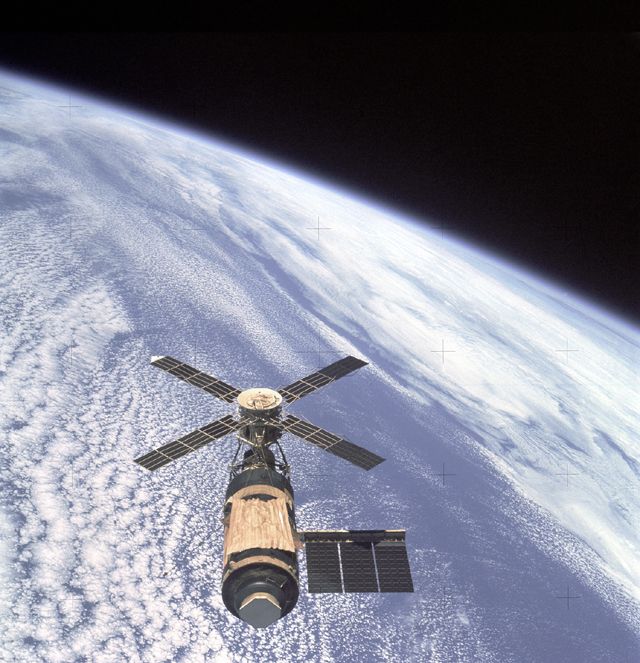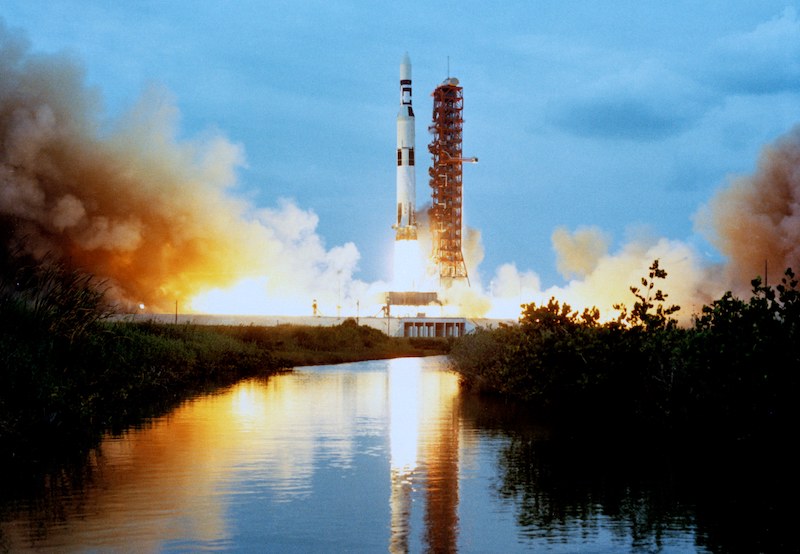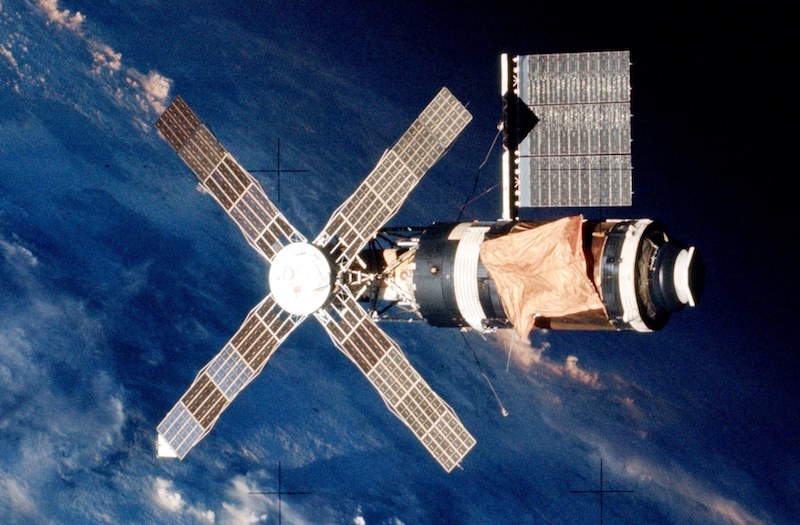
Skylab: America’s 1st space station
Fifty years ago today (May 14, 1973), a Saturn V rocket launched with Skylab onboard. Skylab used technology from the Apollo moon missions, including using the Apollo spacecraft to deliver – and return to Earth – the Skylab crews.
Skylab was America’s 1st space station. Three crews ultimately lived and worked in space for over 171 days. To people of a certain age, who were alive when Skylab launched, the space station is perhaps best known for its dramatic and highly publicized fall back to Earth. Read more about that below.
Overall, Skylab had two important goals. First, NASA had set out to prove humans could work and live in space for extended periods of time. Second, the astronauts aboard Skylab would study and expand our knowledge of the sun and solar astronomy.
Pass me that book? Back on Skylab, they had no iPads for their information, but instead it was all pen and paper. #Skylab50 pic.twitter.com/hed10WQTED
— Searching For Skylab (@SF_Skylab) April 20, 2023
The launch didn’t go smoothly
Upon liftoff, a meteoroid shield meant to shade the spacecraft deployed and tore itself off of the space station. So, the first crew had to remedy this situation while orbiting about 270 miles (435 km) above the surface of the Earth.
At the same time, the shade detachment caused one of the solar-array wings to partly deploy. Then, the 2nd stage retro-rockets blew it off into space. And because of this event, a strap from the shield covered another solar-array wing so that wing couldn’t open all the way to generate power.
Luckily, all the other equipment and spacecraft functions were fine. For example, the Apollo Telescope Mount – the solar observatory on Skylab – with its solar arrays, and most importantly, the pressurization of the space station, were all in good working order.
The Skylab team on Earth spent over a week working to stabilize Skylab and find workarounds for several issues. In addition, they addressed a serious overheating of the craft by varying its nose-up attitude to maintain an acceptable position.
Finally, the spacecraft was operational, but for some time functioned with less than 50% of its designed electrical system.

Skylab was a success
Overall, there were three crews – with three members each – that lived on Skylab. They lived and worked on Skylab for a total of 171 days and 13 hours. The crews performed over 300 experiments, including testing human’s ability to live in zero gravity. They also observed the sun and Earth.
The crews set new space records that included man-hours in space and time in extravehicular activities. Their combined totals exceeded all the world’s previous spaceflights at that time.
Skylab 3 spacewalk. #NASA #Skylab50 pic.twitter.com/heC4HCb2Nx
— Searching For Skylab (@SF_Skylab) April 22, 2023
It was our 1st true space staiton
Skylab showed humans could maintain a space station, perform experiments, and remain in good physical health while living in the weightlessness of space. The 1st crew stayed onboard for 28 days. The 2nd crew were in space for 59 days. And the 3rd crew remained on the space station for 84 days. Also, Skylab was the first space station to receive resupply ships, now a common occurrence for the ISS.
The Skylab crew studied solar flares from space and tracked cyclones and hurricanes on Earth. Overall, they took more than 170,000 photos of the sun and over 46,000 photos of the Earth.
By the way, the 3rd crew made a few observations of comet Kohoutek, a comet that was hyped as a possible comet of the century but failed to live up to the hype.

The final days and fall of Skylab
After the last crew returned to Earth, the ground crew ran a few more tests of the systems onboard. Primarily they were checking for equipment failures and how much systems had degraded over the time spent in space.
Eventually, Skylab was moved in to position for reentry and all its systems were shut down. Its orbit was expected to decay over about 10 years.
But only remained in a stable orbit for eight years and so came back to Earth earlier than expected.
And its fall to Earth was highly publicized! It was perhaps the first major fall of a satellite from orbit.
After much speculation about where Skylab would land – and whether it would damage people or things on the ground – Skylab finally crashed back to Earth on July 11, 1979. It caused big hunks of hardware to fall into the Indian Ocean and across Western Australia.
And, famously, it prompted the sparsely populated town of Esperance, in Western Australia, to fine NASA $400 for littering!
Bottom line: Skylab was America’s first space station. Three crews lived and worked in space for over 171 days. They studied the sun and Earth and demonstrated humans could live and work in space for long periods of time.
Via NASA: Happy 40th Anniversary to Skylab
Read more: How to see the International Space Station in your sky











